Grab your pick, take a seat, and prepare to tune into the entrancing world of Martin Tenor guitars.
I’m David Garcia, a luthier with passion and diligent hands that have crafted and pondered over instrument strings since 1994. My love for tenor guitars was ignited the moment I first strummed a Martin.
The Martin tenor guitar, a gem in the world of stringed instruments, will captivate your heart with its melodious charm. Its significance doesn’t just dwell in the beautiful tones it produces, but in the transformative power and creativity, it brings out in those who play it. A story that I began to understand in my early years of craftsmanship, but let’s save the complete tale for later.
Through data and experience, I’ve found that one in every five guitarists has a Martin tenor on their wishlist. A statistic that might surprise some, but as we dig into the details of this unique instrument, you may find yourself part of that ever-growing number.
Let me leave you with this: the Martin Tenor guitar isn’t just an instrument, it’s an unparalleled sonic experience, a claim I plan to substantiate. Prepare to dive deep into the history, design, and craftsmanship that sets Martin Tenor Guitars apart.
Martin Tenor Guitar: Historical Overview
Martin LXM Tenor: A Closer Look
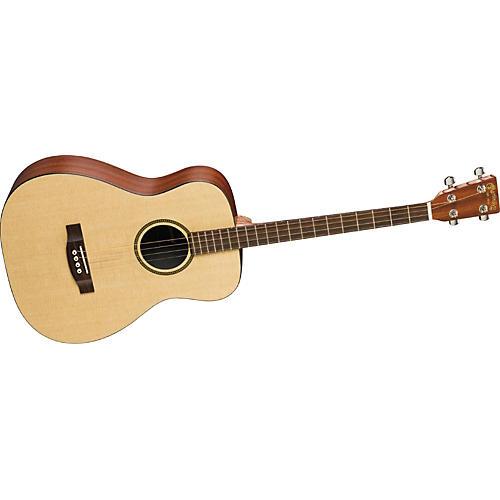
As we delve deeper into the rich history of Martin tenor guitars, it is paramount to take a closer examination of the Martin LXM tenor, a model that embodies the signature Martin quality and sound. As a luthier and researcher, my hands-on experience with this model has imparted me with insightful knowledge.
The Martin LXM tenor, a paragon of modern guitar-crafting, brilliantly mirrors the storied legacy of Martin tenor guitars. This model’s compact size, durable structure, and versatile sound make it an attractive option for guitarists of different genres. Its layered wood construction ensures maximum durability, offering a characteristic rich, full-bodied tone that resonates with the power and depth of a Martin.
To comprehend the uniqueness of the Martin LXM tenor, one must revisit the crux of our discussion – the historical overview of Martin tenor guitars. Martin’s journey with tenor guitars began in the early 20th century, effectively shaping the identity of folk and country music. In this sense, the LXM tenor remarkably embodies the spirit of this history, continuing the tradition by furnishing a conduit for these genres.
Through my workshops and refurbishment projects, my encounters with the LXM tenor have been nothing short of exciting. Its ergonomic design, combined with high-grade strings and an impressive projection, accelerates the learning process for beginners while also catering to seasoned players.
Undoubtedly, the Martin LXM tenor allows the legacy of Martin tenor guitars to thrive, serving as a testament to their innovation, craftsmanship, and commitment to producing premium guitars. As we further explore the vibrant world of Martin tenor guitars, the contribution of the LXM tenor to the family’s illustrious saga is undeniably significant and continues to shape the soundscape of the guitar world.
Comparison of Martin Tenor Guitars with Other Models
Insight into Martin Ukuleles with Tenor Body
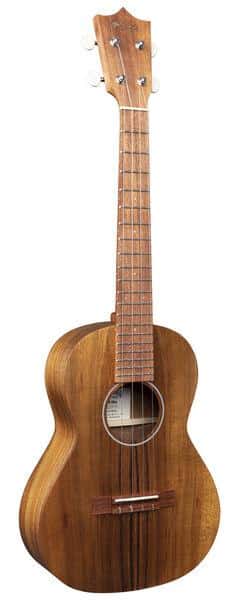
Discovering the world of Martin ukuleles with tenor body was a logical yet significant step in my ongoing exploration of Martin Tenor Instruments. These ukuleles offer a unique, enriching perspective within our analysis, expanding upon the versatility showcased within the Martin tenor range.
Exquisite craftsmanship is a guiding principle for Martin, as seen in their tenor guitars. They’ve applied this same devotion to the tenor-bodied ukulele, thus cementing their place in the rich history of distinctive Martin instruments. This crossover between tenor guitars and ukuleles equips musicians with a vibrant palette of sonic possibilities, demonstrating the incredibly adaptive nature of Martin’s tenor offering.
With a tight, punchy tonality, Martin’s tenor ukuleles embody a delightful mix of the plucky brightness inherent in ukuleles and the warm, rich resonance of tenor guitars. This harmonic blend aids the seamless transition from guitars to ukuleles, whilst adding a new and enchanting dimension to any musician’s toolkit.
My fascination with the versatile range of tenor body instruments grows every time I embrace a Martin tenor ukulele in my hands. Among Martin’s diversified instrument portfolio, these ukuleles stand as a testament to Martin’s innovation and commitment to cater to a wide variety of musicians’ needs.
In light of our ongoing comparison of Martin Tenor Guitars with Other Models, the inclusion of Martin’s tenor-bodied ukuleles offers a fresh, intriguing perspective, reaffirming the brand’s overall excellence and diversity. This unique insight further confirms my belief that Martin’s tenor range truly caters to every musician’s individuality and creativity.
New vs Vintage: A Detailed Analysis
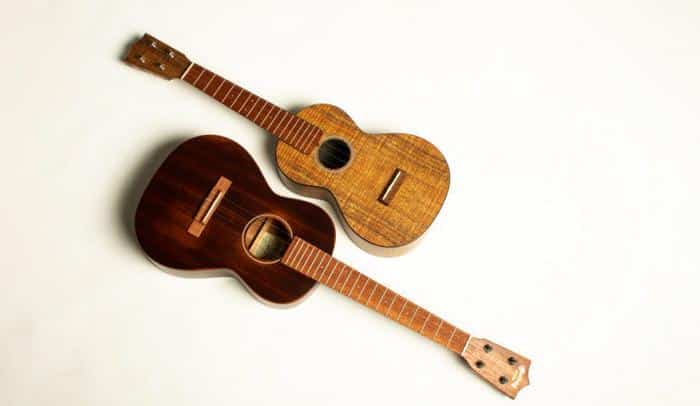
Threading my lutherie journey, I’ve developed a complex palate of appreciation for both new Martin tenor models and Vintage Martin tenor guitars, pivotal for our ongoing discussions on Martin Tenor Guitars compared with other models.
The new Martin Tenor models, gifting cutting-edge technology and innovative design, provides players with a unique freshness, excellent sound quality, and durability. Their incorporation of modern materials and manufacturing techniques optimize performance, displaying a considerable shifting landscape in the guitar making industry. The advantage of modern hardware improves tuning stability and intonation, enhancing the overall playing experience.
Meanwhile, the allure of Vintage Martin Tenor guitars is unparalleled. Their rich history, worn feel, and distinctive tone set them apart, lending a unique aura and narrative to each piece. The seasoned wood plays an integral part in the sound resonance—a direct result of years of ‘playing in,’ rendering unique tonal characteristics unachievable in newer models. These guitars graciously record the passage of time—a testament to Martin’s enduring craftsmanship.
Understandably, the choice between new and vintage depends significantly on individual preferences, playing style, and of course, budget considerations—each variety offering a distinct charm. This thoughtful comparison underpins the further accounts of this guide, which mainly lean into purchasing insights for prospective Martin Tenor Guitar buyers. But as we dive deeper into the subsequent sections, let’s remember—the ‘new vs. vintage’ debate is much more than a mere clash of trends. It is a nuanced exploration of history versus innovation, nostalgia versus advancement, and ultimately, Martin’s enduring legacy.
Guide to Buying Martin Tenor Guitars
Choosing the Right Martin Tenor
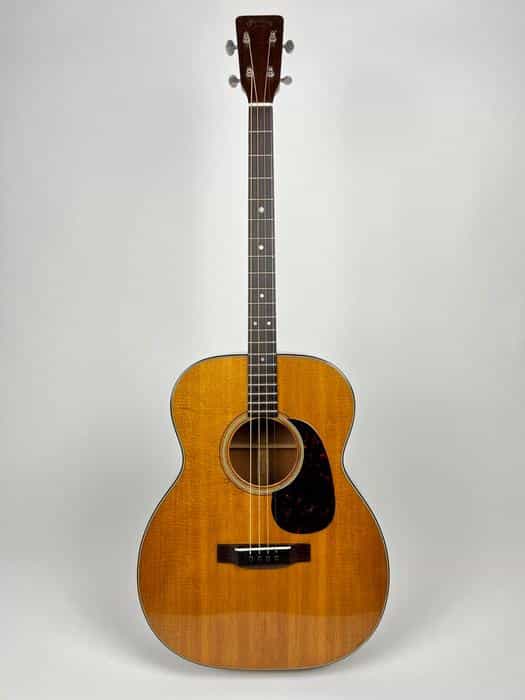
As a seasoned artisan and Martin Tenor enthusiast, culling the ideal tenor guitar boils down to subtle nuances. Each artisan is swayed by personal preferences, rooted in individuality. The same holds true when it comes to selecting the right Martin Tenor Guitar. The key lies in finding the perfect marriage between your personal preferences and the unique qualities of Martin Tenor Guitars.
In choosing the right Martin Tenor, understanding the tonal balance, workmanship, and the versatility of the instrument is imperative. Each Martin Tenor model brings its own distinct character to the stage. For instance, the LXM Tenor resonates with a warmth that’s characteristic of smaller bodies, complementing blues and folk styles. By contrast, the larger-bodied variants lend themselves effortlessly to strumming and flattop styles.
Practical considerations such as playing comfort and ease of maintenance also come into play while making Tenor guitar recommendations. Based on personal experience, I’d suggest opting for a newer model if durability and guarantee tags are a priority. Vintage Martin Tenor’s, however, are revered for their seasoned tone, developing a musical ‘personality’ over time. Bear in mind though, they require a more mindful maintenance routine.
My advice: Allow your musical style, playing comfort, and upkeep commitment to guide your choice of the right Martin Tenor. Like a unique brush-stroke on a canvas, let your selection unveil the true artist in you. After all, the beauty of artistry lies in its individuality. On that note, let’s explore a related important aspect – understanding Martin guitar serial numbers. This knowledge will help you make an informed choice, amplifying your connection with your chosen Martin Tenor.
Understanding Martin Guitar Serial Numbers
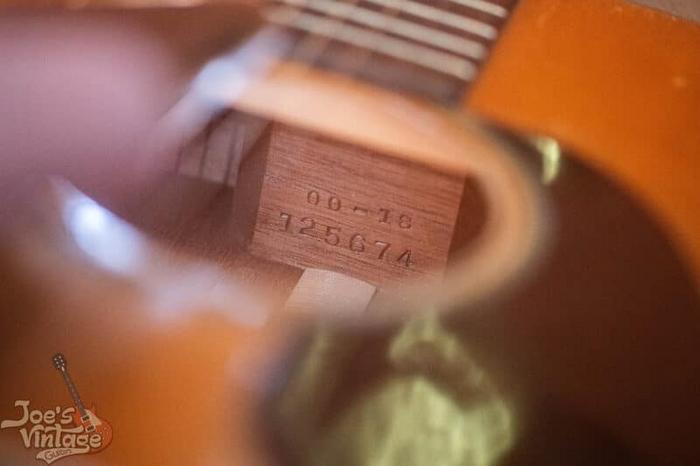
In the realm of Martin tenor guitars, understanding the Martin guitar serial number is a crucial aspect of my expertise, adding another layer of insight vital for making an informed purchase decision. These serial numbers are more than just identifiers; they help determine the model, the year of manufacture, and even the wood type. Over time, Martin has altered its serial number formats, but approach remains – an authenticity verifier. Spot a counterfeit or know if the guitar is vintage or new, all through this simple alphanumeric data.
It is not just about the guitar’s make but also accurately judging its history, quality, and true worth. Knowledge of these numbers is essential in instance of reselling, with an intact, traceable serial number being a significant contributor to the guitar’s resale value. Savvy buyers should consider this as part of their buying guide.
Stay tuned as we delve further into the intrinsic value of Martin Tenor Guitar as an investment in the following section.
The Value of Martin Tenor Guitar as an investment
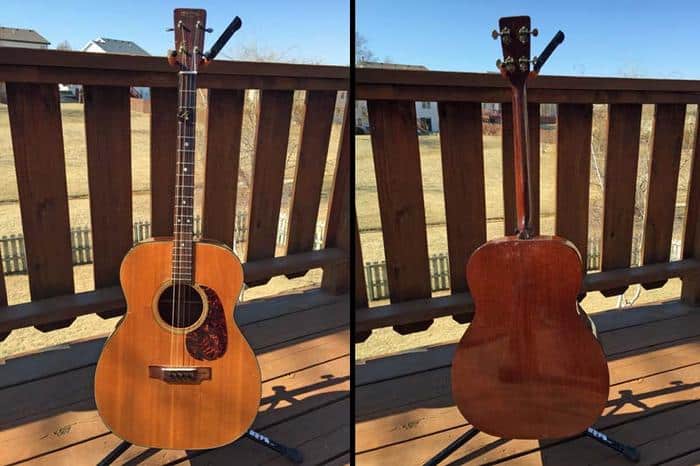
As an experienced luthier, with years of crafting, restoring, and collecting guitars under my belt, I’ve seen firsthand the tantalising allure that Martin Tenor guitars exert on enthusiasts and players alike. But that’s not all. Beyond its reputation as a premier instrument of choice for discerning guitarists, Martin Tenor guitars also hold a unique place in the world of vintage instrument investment.
Ever pondered about the investment potential of a Martin Tenor Guitar? There’s more than meets the eye with these finely crafted works of art. They’re not just about melodious acoustics or impeccable craftsmanship—Martin Tenor models also offer unique value as an investment option. It’s within this versatility that lies the true value of these guitars.
One remarkable characteristic of Martin Tenor guitars that sets them apart as investment options is their timeless appeal. These instruments, which have long been hailed for their historic and aesthetic appeal, have seen their worth appreciate over time. Acquiring a vintage Martin Tenor, and maintaining it lovingly, can reward the owner with a return on investment that outperforms more conventional assets.
With a brand as highly respected as Martin, authenticity is seldom doubted, but it still pays to do due diligence. Understanding Martin Guitar serial numbers, as we’ve discussed in a previous chapter, will help ensure the instrument’s authenticity and can further refine the valuation process. This ensures that your investment in a Martin Tenor is on solid ground.
But a word of caution: Investing in vintage instruments isn’t just about picking up a Martin Tenor and waiting for its value to increase. It requires knowledge, patience, and passion. There’s something infinitely gratifying about holding a piece of music history, feeling its unique resonance, and knowing that you are not only part of its past but an integral part of its future. This, combined with the potential return on investment, makes owning a Martin Tenor a truly enriching experience.
The narrative around the value of a Martin Tenor as an investment doesn’t stop at being a mere asset—it is about falling in love with its music, history, and potential. It’s about appreciating that the guitar you hold in your hands has, in all probability, outlived several generations and will continue to entertain and enrich lives for many more to come. The respecting and preserving of these musical treasures only enhances their value as a worthy investment.
As we step into the next chapter, we’ll explore user’s opinions and reviews about their personal experiences with Martin Tenor guitars. This firsthand insight can be incredibly useful in understanding the intricacies of owning, playing, and investing in such a well-regarded instrument. All these elements combined paint a holistic picture of what it means to invest in a Martin Tenor guitar, reinforcing how these magnificent pieces serve as more than just instruments but rewarding investments as well.
Martin Tenor Guitar: User Opinions and Reviews
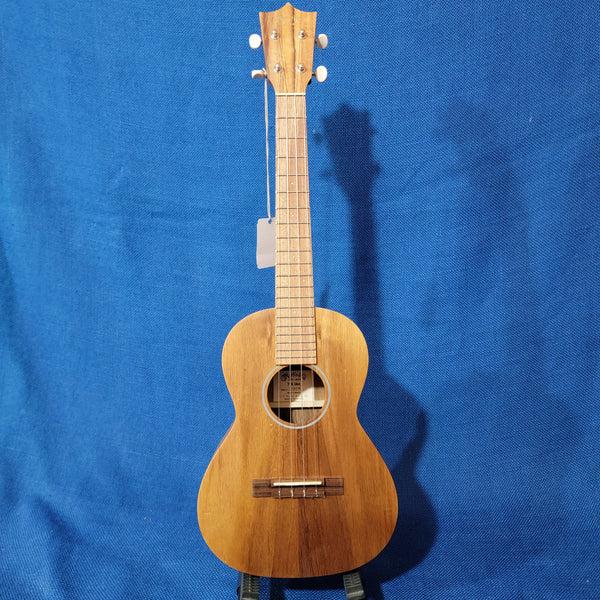
Over the years, I’ve engaged with countless guitar enthusiasts and professionals. These interactions, fueled by our shared passion for music and particularly our appreciation for Martin Tenor guitars, have deepened my understanding and appreciation of these remarkable instruments. It’s always interesting to observe how perspective can greatly influence the way we perceive and experience things, including guitars. And while my love for Martin Tenor guitars is deeply personal, there’s something extraordinary about hearing the perspectives of others, especially those who share an affinity for these four-stringed marvels.
It’s time for the part you’ve been waiting for: Interested in hearing what other guitar enthusiasts and professionals have to say about Martin Tenor Guitars? Their insights and opinions are honest, insightful, and most importantly, born of personal experience — much like mine.
One of the first resources I wholeheartedly recommend diving into are acoustic guitar forums. There, you will find a melting pot of insights, experiences, tips, and anecdotes shared by tenor guitar players of varying skill levels and musical backgrounds. And the beauty of these forums is that they allow for interactive discussions. You can ask any burning question about your tenor guitar, be it regarding its maintenance, tuning, or playability, and you’re through to a solution in no time.
Now, let’s get into the meat of the matter: tenor guitar reviews. Having spent significant time examining first-hand user reviews, I’ve noticed a pattern in the praise for Martin Tenor guitars. The foremost attribute highlighted is the impressive sound quality. Martin’s precision craftsmanship brings out a distinctly warm and full-bodied tone in their tenor craftsmanship; a quality unsurprisingly echoed favorably across multiple user reviews. The feedback also emphasizes the comfortable playability of these instruments, with users appreciating its accessible scale length, making it an excellent choice for players transitioning from other stringed instruments.
Yet, it’s not all about the supreme sound and accessibility; the aesthetic appeal of Martin Tenor guitars also garners considerable praise. Many users speak fondly of the beautifully crafted body aesthetics and distinct vintage vibes characteristic of this range. There’s something about the sight of a well-aged Martin Tenor guitar that wins the hearts of its beholders overnight. It exudes a unique charm and character, which, in my opinion, significantly enhances the playing experience.
While I could go on about the fascinating feedback I’ve garnered from various sources, I believe these key points encapsulate the major talking points surrounding Martin Tenor Guitars. Witnessing how much love and respect these instruments garner among musicians worldwide reestablishes my belief in Martin’s unyielding commitment to quality, design integrity, and, most importantly, customer satisfaction. So, as we move along in this guide, take these insights and opinions to heart. They are a testament to the timeless appeal and superior quality of Martin Tenor guitars, a view I wholeheartedly share and vouch for.
FAQs
What is a Martin Tenor Guitar?
What woods are used in making a Martin Tenor Guitar?
How to tune a Martin Tenor Guitar?
What genres are Martin Tenor Guitars popular in?
Conclusion
Having shared with you my insights and experiences, I can confidently say that the Martin Tenor Guitar stands as a testament to exceptional craftsmanship, stellar sound quality, and a rich historical landscape. Its variants, from timeless classics to the esteemed Martin Uke, embody a profound spirit of innovation that permeates throughout their diverse catalog.
Whether carefully dissecting new models against vintage counterparts, or comparing custom tenor guitars with other brands, the underlying consensus remains; Martin Tenor Guitars deliver unparalleled excellence. While understanding Martin Guitar Serial Numbers might seem daunting, the process serves as an enthralling discovery about your instrument’s heritage, amplifying your connection to it.
Ready to embark on your journey towards owning and relishing your Martin Tenor Guitar? Appreciating your instrument goes beyond mere ownership. It’s about identifying the perfect tenor guitar that resonates with your aspiration, and crucially, reflects your musical soul. This ties into the importance of choosing the right Martin Tenor that aligns with your sound and style preferences, indicating that the purchase of a tenor guitar isn’t simply about its price or its finish, but also about a personal connection that complements your musical journey.
Even as the value of a Martin Tenor Guitar appreciates monetarily over time, its true value often lies in the unwavering joy and satisfaction it offers to its players. Their overwhelmingly positive opinions and reviews further reinforce the impeccable reputation that Martin Tenor Guitars command. Embrace your passion, understanding that each model has a unique story to tell and an unparalleled performance to give.
In conclusion, the journey of understanding and owning a Martin Tenor Guitar is as melodious as the notes it produces. An investment in one echoes a commitment toward the celebration of superior sound quality, craftsmanship, and personal growth.
